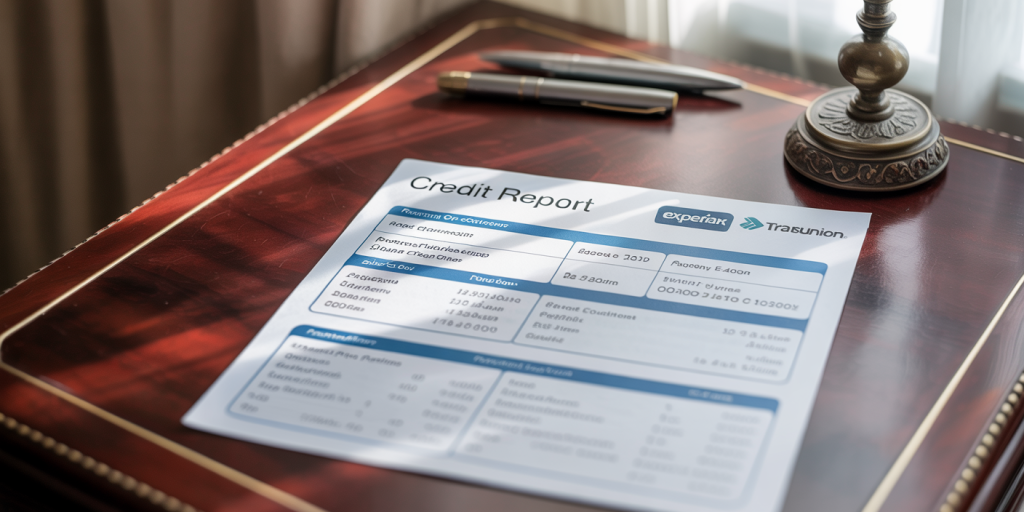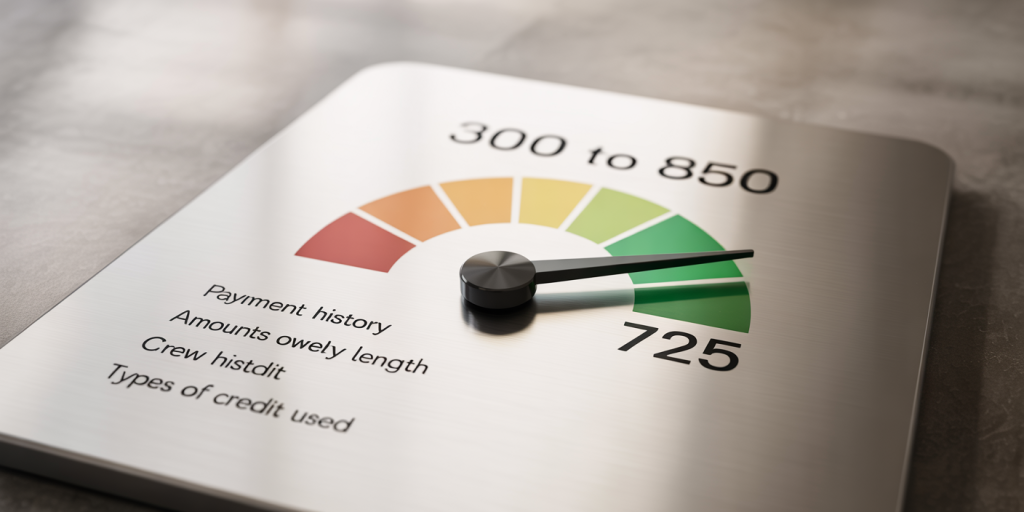In personal finance, understanding key concepts like credit reports and credit scores can greatly influence your financial health. These two terms are often used interchangeably by many, but they represent distinct elements of your credit profile. Both play crucial roles in determining your ability to borrow money, qualify for loans, or even rent an apartment. Understanding their differences, how they work, and why they matter is essential for everyone, regardless of age or financial experience.

To set the stage, imagine you’re applying for a mortgage. The lender wants to know two things: the detailed history of your borrowing behavior (credit report) and a quick summary of your creditworthiness (credit score). Knowing how these two work can help you better prepare and manage your finances for such big decisions.
What Is a Credit Report?
A credit report is a comprehensive record of your credit history. This report is compiled by credit reporting agencies, commonly known as credit bureaus, such as Experian, Equifax, and TransUnion in the United States. It contains detailed information about your borrowing and repayment behavior, including credit accounts, loan repayments, credit inquiries, and public records like bankruptcies.

Credit reports are updated regularly, often monthly or quarterly, by lenders and creditors who report your credit activities. A typical credit report includes the following: Personal information (name, address, Social Security number) Credit accounts (credit cards, mortgages, auto loans) Payment history (on-time payments, late payments) Credit inquiries (who has checked your credit) Public records (bankruptcies, liens, judgments)
For example, Jane Doe applies for a credit card. The credit card issuer will request her credit report to see her past payment behavior on existing loans and cards. If Jane has a history of consistently paying her bills late, that information will appear on her credit report, influencing the issuer’s decision.
Understanding Credit Scores
In contrast, a credit score is a numerical value derived from the information in your credit report. It represents your creditworthiness in a concise format that lenders can quickly evaluate. The most widely used credit score model in the U.S. is the FICO Score, which ranges from 300 to 850, where a higher score indicates better creditworthiness.
Credit scores are calculated using various factors found in your credit report, including: Payment history (35%) Amounts owed (30%) Length of credit history (15%) New credit (10%) Types of credit used (10%)

For instance, if John has a clean credit report with few missed payments, low credit card balances, and a long credit history, his credit score might be around 780, which is considered excellent. Conversely, if he has numerous late payments or maxed-out credit cards, his credit score might drop to the 600 range, considered poor.
Credit scores are crucial because many lenders use these numerical values to make credit decisions quickly. They help determine loan eligibility, interest rates, and credit limits. A high credit score usually means better loan terms and more favorable rates, potentially saving you thousands of dollars over a loan’s lifetime.
Key Differences Between Credit Report and Credit Score
While credit reports and credit scores are closely connected, understanding their differences can improve your financial management. A comparative table below summarizes the main distinctions:
| Feature | Credit Report | Credit Score |
|---|---|---|
| Definition | Detailed record of credit history | Numerical summary of creditworthiness |
| Content | Lists credit accounts, payment history, inquiries | Score calculated from credit report data |
| Length | Typically several pages long | Single number (usually 300-850) |
| Purpose | Provides detailed financial history | Used for quick credit decision-making |
| Frequency of Update | Updated monthly/quarterly by lenders | Updated as credit report updates |
| Users | Lenders, landlords, employers, individuals | Primarily lenders and financial institutions |
Understanding these distinctions ensures you pay attention to both your detailed credit history and your overall creditworthiness.
Practical Examples: How They Impact Financial Decisions
Consider the case of Emily, who is applying for a car loan. The lender first orders her credit report to understand her payment habits and any outstanding debts. The report shows minor late payments from the previous year but also a consistent history of repaying her auto loans and credit cards responsibly. Next, the lender checks her credit score, which comes out as 720—a good score.
Although Emily’s credit report has some slight negatives, her credit score still reflects overall positive credit behavior. Because of this, the lender approves her loan at a reasonable interest rate. Had she not reviewed her credit report beforehand, Emily might have been caught off-guard by certain entries and missed opportunities to address inaccuracies or misunderstandings.
In another case, Michael checked only his credit score before applying for a mortgage and saw a score of 680, which seemed acceptable. However, the lender’s review of his credit report revealed several overdue credit card balances and a recent foreclosure. Despite a fair score, the details of his credit report led to a denial of his loan application. This example underscores why reviewing both your credit report and credit score is critical.
Why Both Matter for Credit Monitoring and Improvement
Credit reports and credit scores are essential tools for monitoring and improving your credit health. Regularly checking your credit report allows you to catch errors or signs of identity theft early. According to a 2019 study by the Federal Trade Commission (FTC), about 1 in 5 consumers who checked their credit reports found errors on at least one of them.
For example, if you spot a fraudulent credit card account in your report, you can dispute it immediately to prevent damage to your credit score. Many credit bureaus allow consumers to access their credit reports for free once a year, making it accessible for ongoing vigilance.
On the other hand, monitoring your credit score helps you understand how your financial habits affect your creditworthiness. When you pay down debt, reduce credit utilization, or avoid opening multiple new credit accounts, your score usually improves. Several fintech apps now offer free credit score tracking, enabling you to see real-time changes as you make financial decisions.
Together, these tools provide a fuller picture of your credit profile and empower you to make proactive choices. For instance, if you notice your credit report includes late payments, you can work on making timely payments going forward to boost your credit score. This, in turn, opens up better borrowing opportunities and potentially lowers loan costs.
Future Perspectives: The Evolving Landscape of Credit Reporting and Scoring
The world of credit reporting and scoring is continuously evolving, influenced by technological advancements, regulatory changes, and shifting consumer behaviors. One emerging trend is the incorporation of alternative data into credit reports. Alternative data includes non-traditional information such as rent payments, utility bills, and even subscription service payments which are not typically reported to credit bureaus.
In 2023, Experian launched its Boost service, allowing consumers to add utility and phone bill payments to their credit files. This can help individuals with limited credit history—often called “credit invisibles”—to establish or improve their credit scores. Early reports show that consumers using such services can see their credit scores increase by 10 to 15 points, providing more access to credit.
Additionally, regulators are pushing for greater transparency and fairness in credit scoring algorithms. The Consumer Financial Protection Bureau (CFPB) actively monitors credit bureaus and scoring models to prevent discrimination and ensure accuracy. Future innovations may include more personalized credit scores incorporating predictive analytics and machine learning, potentially offering a more nuanced evaluation of credit risk.
Moreover, with the rise of buy-now-pay-later services and digital lenders, new forms of credit data will start to play roles in credit assessments. Consumers must stay informed about these developments and understand how their financial activities outside traditional lending may impact their credit profiles.
Credit reports and credit scores are fundamental components of the credit system, each serving distinct but complementary functions. While the credit report provides an in-depth, itemized history of your borrowing behavior, the credit score summarizes that information into a single number used by lenders for fast decision-making. By regularly checking both and understanding their differences, consumers can manage their credit health more effectively, improve their eligibility for credit products, and ultimately achieve their financial goals.
As credit reporting evolves with new data types and analytical technologies, staying vigilant and informed remains the best strategy for protecting and enhancing your creditworthiness in the years ahead.

Deixe um comentário